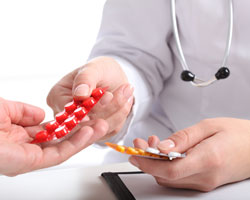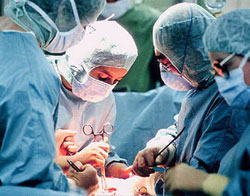Treatment of Heart Defects
The treatment of congenital heart disease is determined by the type of defect the child has.
Mild heart defects can be left untreated, although it is advisable to have regular check-ups to evaluate the condition of the heart.
Severe defects, on the other hand, require surgery and lifelong surveillance. In some cases, the heart defect is not severe enough to cause any symptoms in infancy; however, it can be life-threatening if left untreated. In such cases, the parents might be reluctant to put their baby through surgery (since by the looks of it, everything is “fine” with the child), and they need to be advised that it is necessary for the survival of their child.

Medications can also be used to relieve some of the symptoms; however, they cannot cure the defect. Most common medications for palliative treatment of heart defects are:
- Diuretics – are used to remove the excess liquids that have accumulated in the body as a result of insufficient pumping action of the heart.
- Digoxin – is used to slow down the heart and increase the force with which it pumps the blood. In recent years, however, this medicine is quickly losing its popularity since latest studies have shown that it does not decrease mortality rate of patients with congestive heart failure.
- Beta-blockers – unlike drugs made from digitalis (digoxin), beta-blockers have proven to increase the life expectancy of patients with congestive heart failure caused by congenital heart disease.
Below we will list the congenital heart defects which can be treated using surgery:
- Aortic valve stenosis – depending on how narrow the aortic valve is, the surgery can be postponed or has to be performed immediately. This defect can be treated using two methods.

o Balloon valvuloplasty –a procedure during which a catheter that contains a balloon on the end is inserted into a blood vessel and moved up until it reaches the heart. The balloon is then positioned in the narrowed valve and inflated. This can help widen the valve and remove the symptoms of stenosis.
o Open heart surgery – this method is used when balloon valvuloplasty fails to work. During the procedure the valve has to be replaced with an artificial one which is usually made from human or animal tissues. In adulthood it should be substituted for a synthetic one.
- Coarctation of the aorta – is a condition during which a segment of aorta is too narrow, which substantially reduces the blood flow (usually to the abdomen and the lower limbs). Several methods can be used to treat this condition:
o Surgically removing the narrow part of the aorta and then reconnecting the remaining ends.
o Using a catheter to widen the aorta using a balloon or a stent (much like a stent used to treat a heart attack).
o Creating a graft from the child’s own blood vessels and creating a bypass around the blocked site.
o In mild cases, the only treatment required for this defect is drugs to control the high blood pressure, as well as diet and exercise.
- Ebstein’s anomaly – causes insufficiency of the tricuspid valve. In mild cases, it does not require treatment. However, if the insufficiency is too pronounced a valve repair surgery is recommended. If that does not work, the valve has to be replaced with an artificial one.
- Patent ductus arteriosus – in many cases this condition can be treated using medications alone immediately after birth. If the medications do not work, the duct can be sealed using a plug or a coil which can be implanted using a catheter. The medications that can be used to stimulate the closure of this duct include:
o Indomethacin;
o Special form of ibuprofen.
- Pulmonary valve stenosis – if this stenosis does not cause any symptoms, it can be left untreated. In more severe cases, it can put a lot of stress on the right ventricle, eventually leading to right-sided heart failure. Similarly to aortic valve stenosis, this condition can be treated by either using the balloon pulmonary valvuloplasty or through open valvotomy.
- Septal defects –the treatment of atrial and ventricular septal defects largely depends on the size of the defect.
o If the septal defect is small, no treatment is needed.
o A ventricular septal defect that is larger and causes symptoms should be closed using surgery.
o A large atrial septal defect is usually closed using an umbrella-like device that is inserted using a catheter. For a larger atrial septal defect, a surgery might be needed. In contrast to open heart surgery, the procedure which involves using a catheter leaves almost no scaring except from a small bruise in the groin. The recovery after such a procedure is also very quick.
- Tetralogy of Fallot – this condition can only be treated using open heart surgery. If the symptoms are severe, surgery is recommended right after birth. Alternatively, the surgery can be postponed until the child is 3-6 months old. During the procedure, the surgeon opens up the narrow pulmonary valve and closes the hole in the septum.
- Transposition of the great arteries – to treat this condition, first an injection of prostaglandin should be given to the child right after birth (this prevents the ductus arteriosus from closing). This helps to relieve the symptoms until the operation can be performed. Afterwards, when the baby’s condition has been stabilized, surgery is recommended during the first month after birth. During the surgery the major arteries are detached and reattached to the correct places.
- Truncusarteriosus – to treat this condition the abnormal blood vessel is split in two to create new blood vessels.
Next Chapter: Complications of Congenital Heart defects









